June 2
St. Petersburg
And now two days in St. Petersburg to see . . . everything! On this day we would visit Catherine’s Palace, do a walking tour of the city beginning with a subway ride, and then an evening of Cossack folk songs and dances. On the following day we would visit Peterhof Palace (yes, palaced-out) and explore the city by water. Almost like in Vacationland USA! On the third day we would rest.


[Big Day! A morning bus ride to Catherine Palace in Pushkin, about 30 km south of St. Petersburg. Along the 40-minute drive route one can see such sights as this. One would think this distinctive yellow building wearing red hats would be identified in the “literature”? It’s not. Must be an FSB (nee, KGB) building?]

[Nukes!]

[More colorful high-rises in the modern tradition . . . ]

[It’s good to know pizza is aways available . . . ]

[It appears we’re approaching our destination . . . ]

[Statue of Alexander Pushkin in Lyceum Garden, pretty much adjacent to Catherine Palace . . . ]

[Alexander Sergeyevich Pushkin, 6 June [O.S. 26 May] 1799 – 10 February [O.S. 29 January] 1837) was a Russian poet, playwright, and novelist of the Romantic era who is considered by many to be the greatest Russian poet and the founder of modern Russian literature. (Wikipedia)]

[We have debused and are approaching the entrace to Catherine Palace . . . ]


[Sasha displays his lollipop as we are invited to listen to the band playing American patriotic tunes . . . ]

[The Super gets into it with an appropriate donation . . . ]

[And now the Super welcomes you to the palace grounds. As Professor Doctor Colonel Kiehne says, it’s the very essence of unmitigated opulence.]
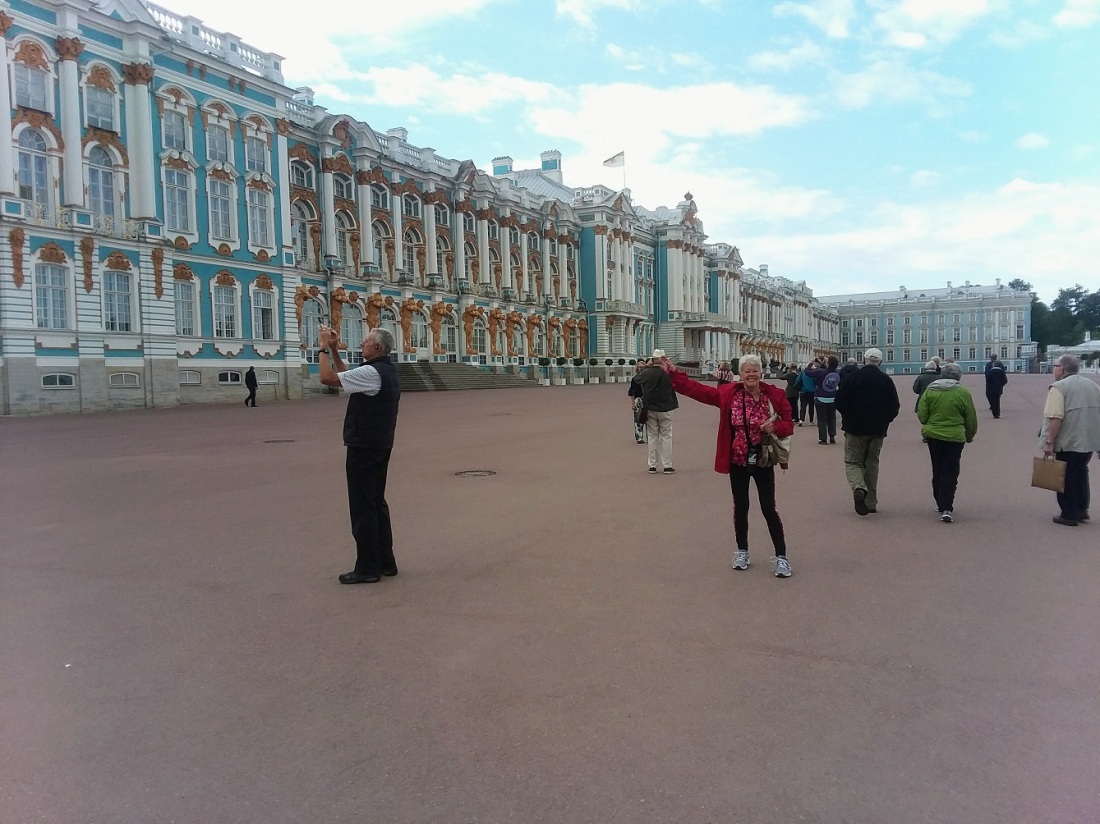

[Let’s go in!]

[This was fine, shooting photos outside from the palace grounds . . . ]

[As with much of antiquity, undergoing renovation . . . ]
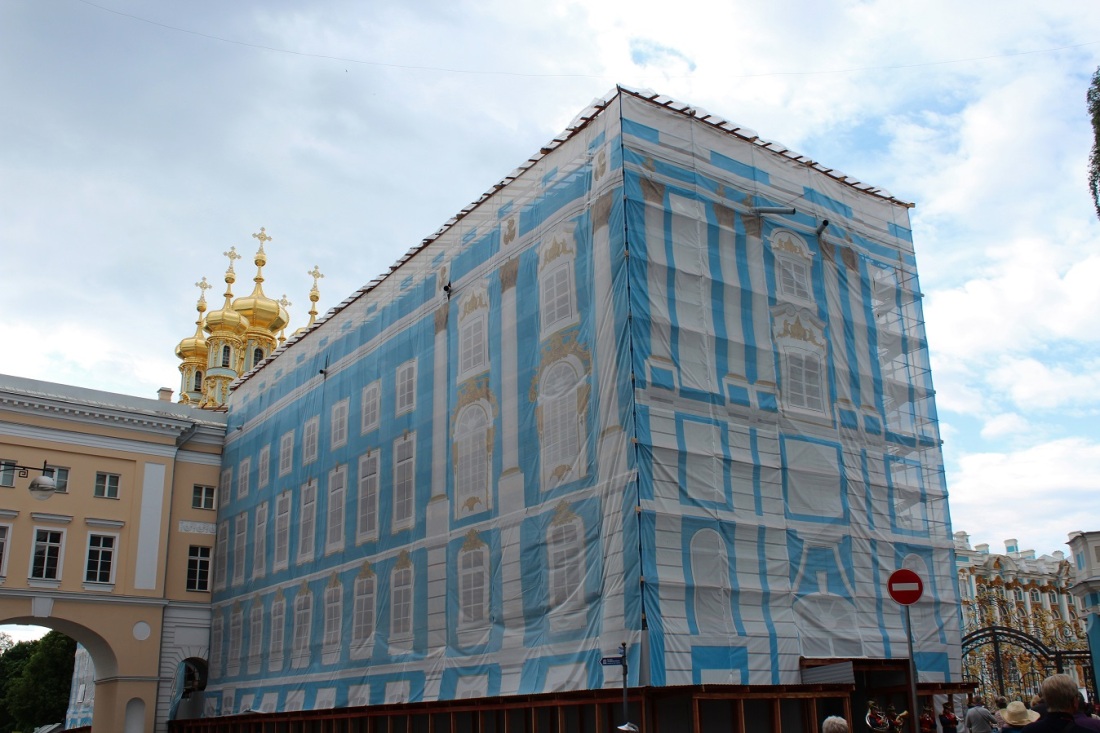




[A final look into the gardens before . . . ]

[Entering the building . . . ]

[It appears he has an “outie” . . . ]

[And going inside, places of these vintages, e.g., Versailles, et al, were not designed, or equipped, to handle large groups of tourists . . . ]

[It appears the Super has broken away from the crowd . . . ]

[Oh, did I mention “footies”? Well, probably a good idea to protect the overly trod upon floors . . . ]

[The doll house version of the palace . . . ]

[Mass, forward! The Grand Hall, or Hall of Lights, was a special occasion room. At 1,000 square meters, it is the largest room in the palace . . . ]

[And a grand “selfie” room . . . ]

[Some of the ceiling appointments therein . . . ]

[Did somebody mention opulence?]

[Ready! Set! Photograph!]

[I don’t think this design pattern will work in our new home?]

[Just say “selfie”!]

[Well, uffda, there are mirrors everywhere . . . ]

[Two from the Super . . . ]


[It appears the table designer won a blue ribbon?]

[Didn’t paint get in their eyes when they did the ceilings?]

[It gets hot and claustrophobic going through such places. A look out a window brings welcome relief . . . ]

[Crown molding on steroids . . . ]

[The Main Staircase. TMI: In the 1750s, when he reconstructed the Great Palace, Bartolomeo Francesco Rastrelli placed the main staircase at a distance from the entrance gates, in the southern part of the palace, which was crowned by a dome and spire. In the reign of Catherine II Rastrelli’s main staircase was removed and instead, in keeping with the wishes of the mistress of Tsarskoye Selo, Charles Cameron constructed a new staircase of mahogany in the centre of the palace, in place of the Chinese Hall that Rastrelli had designed. In 1860–63 the staircase was reconstructed by the architect Ippolitto Monighetti. He produced a new one in marble stylized in imitation of the Rococo and decorated by elaborate carved balustrades and figured vases. The stairwell occupies the entire height and width of the palace and is lit by three tiers of windows on both east and west. The white marble steps ascend from both sides to a central landing from which four flights rise to the first floor where the state rooms are located. The walls are embellished with moulded ornament and also decorative vases and dishes made of Chinese and Japanese porcelain (eighteenth- and nineteenth-century) – a reminder of the Chinese Hall that was located here in the mid-1700s. During the Second World War a fire destroyed the décor of the Main Staircase. Only the collection of porcelain survived in part, as it was evacuated in time, together with fragments of the marble vases and balustrades found among the ruins. To recreate the appearance of the stairwell, canvases were selected that match the previous compositions in both style and size. Today the upper landings of the staircase are adorned by restored marble sculptures of Cupid Sleeping and Cupid Awakening that were carved by Victor Brodzsky in 1860 by the order of Empress Maria Feodorovna, the spouse of Alexander II. In the nineteenth century the well of the Main Staircase was decorated with a ceiling painting by Joseph-Marie Vien, The Triumph of Venus, and two smaller works by Guido Reni, The Rape of Europa and Galatea. These were destroyed when the roof collapsed during the war. To recreate the appearance of the stairwell, canvases were selected that match the previous compositions in both style and size. The central painting of The Judgement of Paris, produced by the Italian artist Carlo Maratti, and Jupiter and Callisto by Pietro Liberi came from the stocks of the State Hermitage. The composition Aeneas and Venus by an unknown eighteenth-century Italian artist that is on the west side of the ceiling was a gift to the palace museum from the Leningrader A. Tikhomirov (eng.tzar.ru/museums/palaces).]

[This is the stock photo I didn’t get. Which is why there will be a multiple-choice test on this later.]

[More “appointments”?]

[A generic ornate white wall clock . . . ]

[Eggos will be served precisely at 8:30 . . . ]

[A delft tile room heater . . . ]

[Help! Let me out! I wanna go to the gardens! (Yes, I felt the same way in Versailles.)]
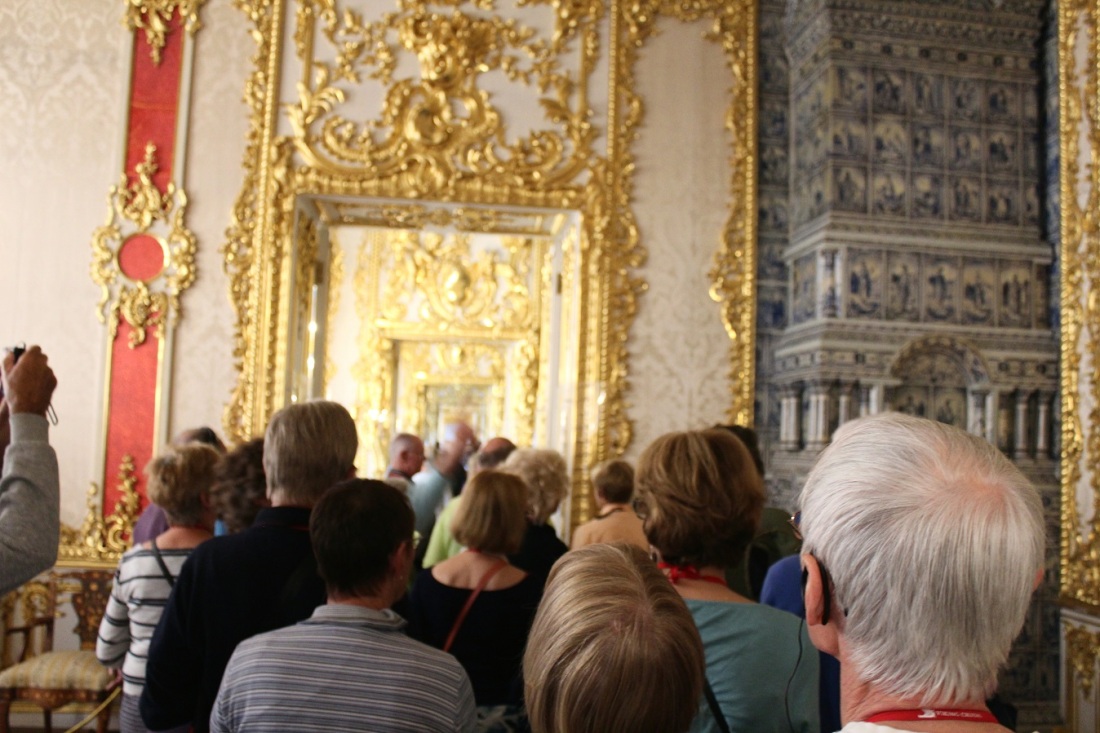
[Is there a restroom up there?]

[More room-to-room appointments . . . ]


[Catherine the Great in Portrait Hall . . . ]

[Da!]
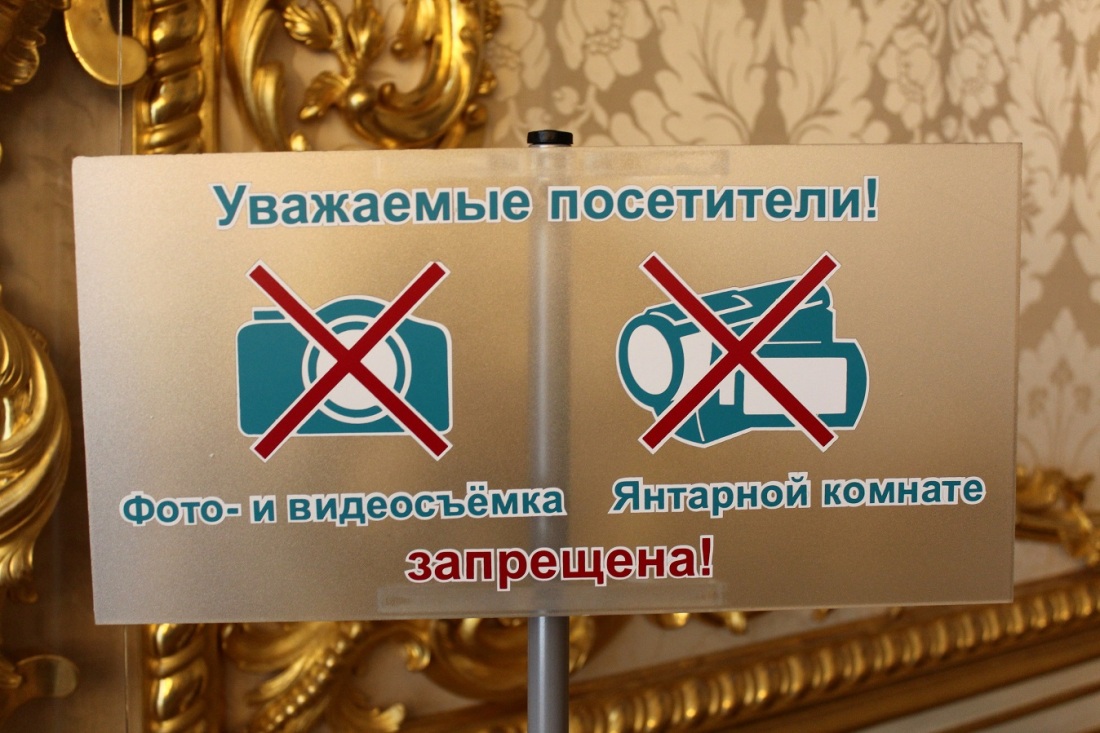
[The Portrait Room . . . ]

[A sampling of portraits . . . ]
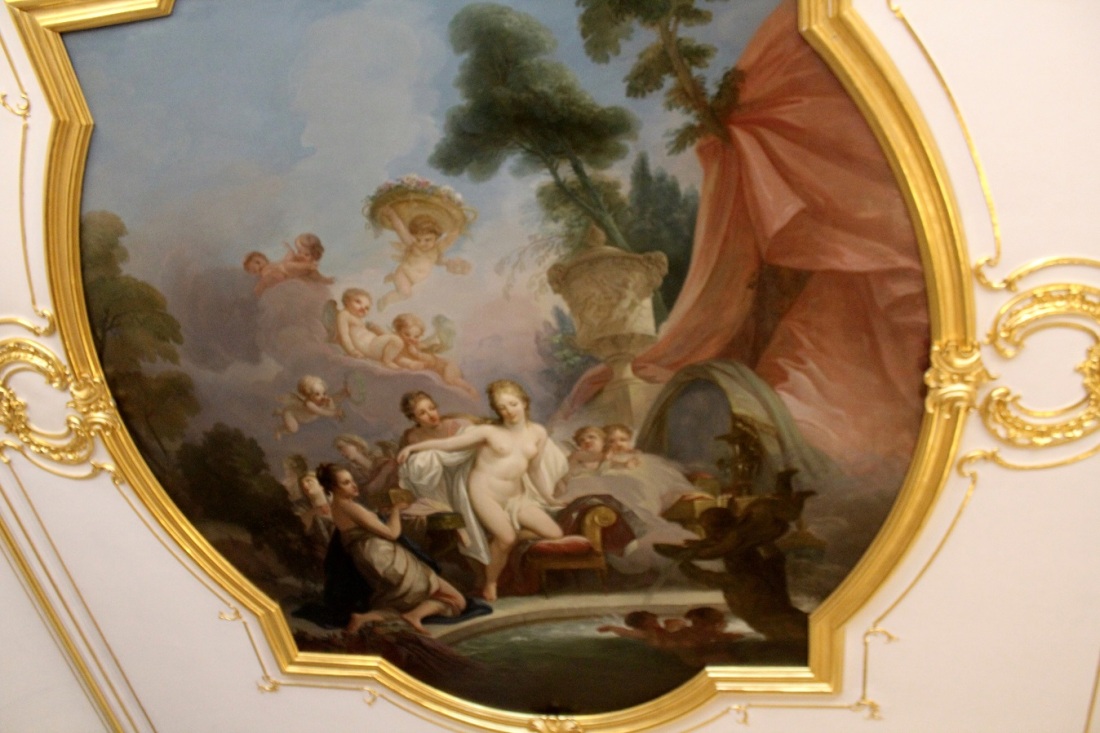

[Alexander I . . . ]


[Yes, we finished the makeover of our breakfast nook . . . ]

[Relief! Outside again!]

[Pam also rejoices in the great outdoors . . . ]

[These appear to be known simply as garden statues . . . ]
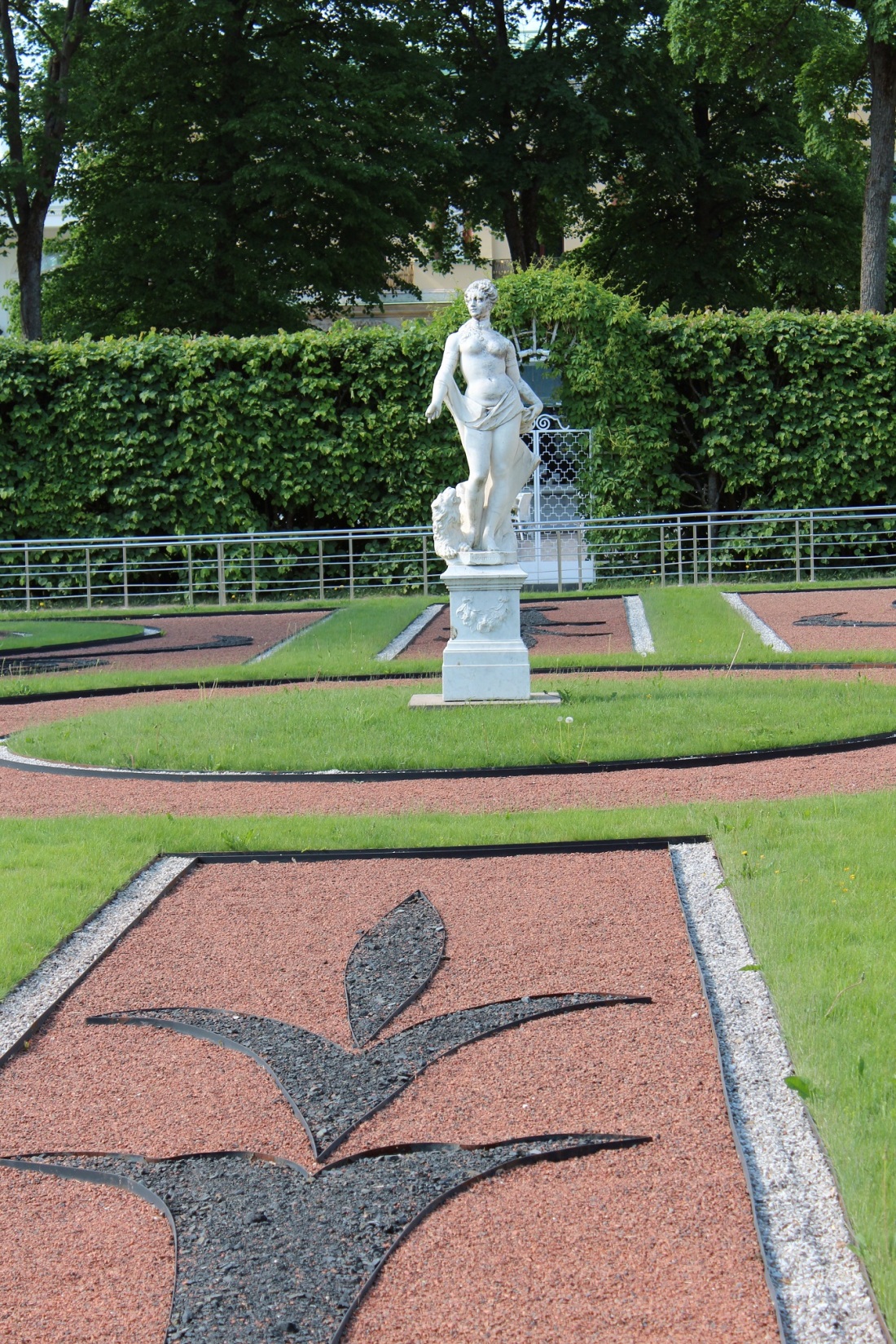



[Hmmm, it was June 2, and we were in there?]

[Tom soaks in his surroundings . . . ]

[Let’s just stroll the grounds . . . ]


[Reflecting pool and building . . . ]

[Cameron Gallery . . . ]

[And again . . . ]


[Called a lake . . . ]

[Meanwhile, back at Cameron Gallery . . . ]

[Tom and Pam plot our next move . . . ]

[How ’bout a stroll by the lake . . . ]

[Grotto Pavilion on the lake . . . ]

[The Super appears to have discovered a large discus thrower . . . ]
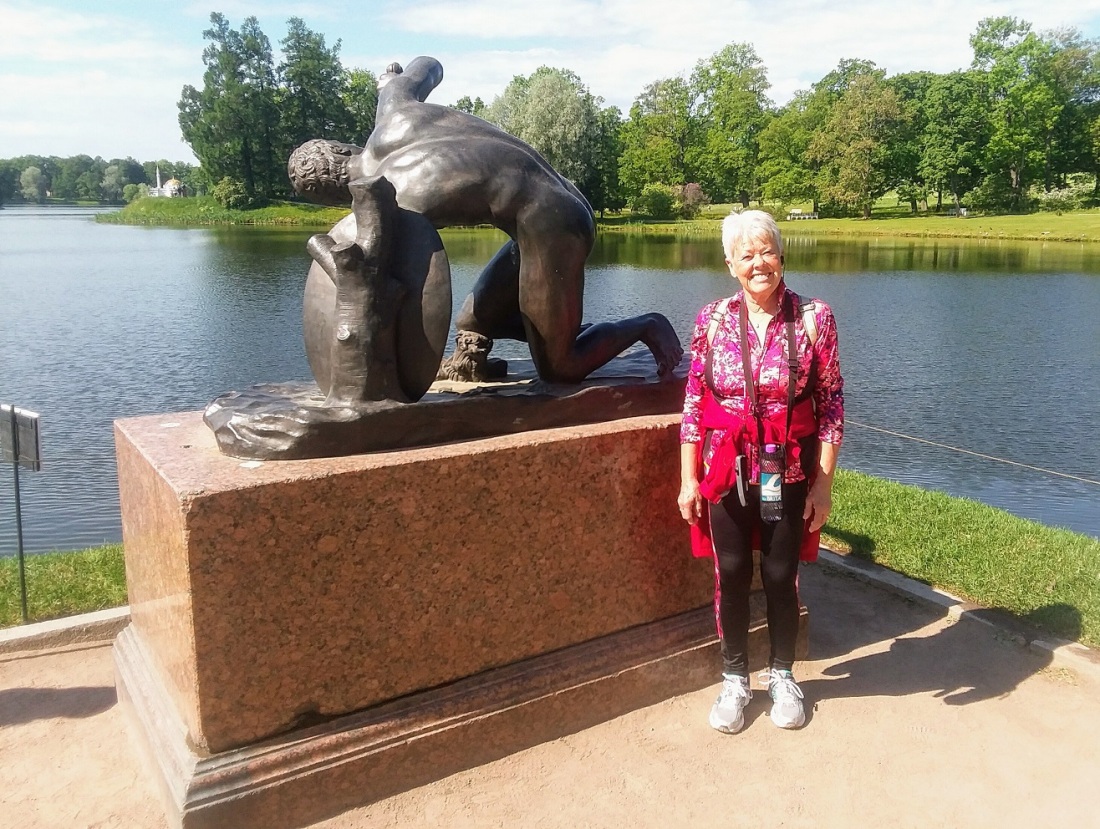
[Is this an original Olympian?]


[This is kinda like No Name Pond at home . . . ]

[Our 3B guide for the palace . . . ]

[Pam Does Photos . . . ]


[In the Grotto . . . ]


[A terrific a cappella group was performing, or practicing, so shhhhhhhhh!]

[On the outside of the “singing” room . . . ]

[The Pavilion crowd . . . ]

[Was this looking in through a window?]

[We wandered far from the palace . . . ]


[What could it be?]

[The Super seeks some bas relief . . . ]

[Heading back to the boat to prepare for our next outing . . . ]


[There’s our bridge . . . ]

[There’s our boat and our bridge . . . ]


[And we’re off for our afternoon adventure, next in Part II. Sasha has gathered us for a trip into the city on the subway . . . ]

Destiny may ride with us today, but there is no reason for it to interfere with lunch. ~ Peter the Great
Up Next: More St. Pete . . .